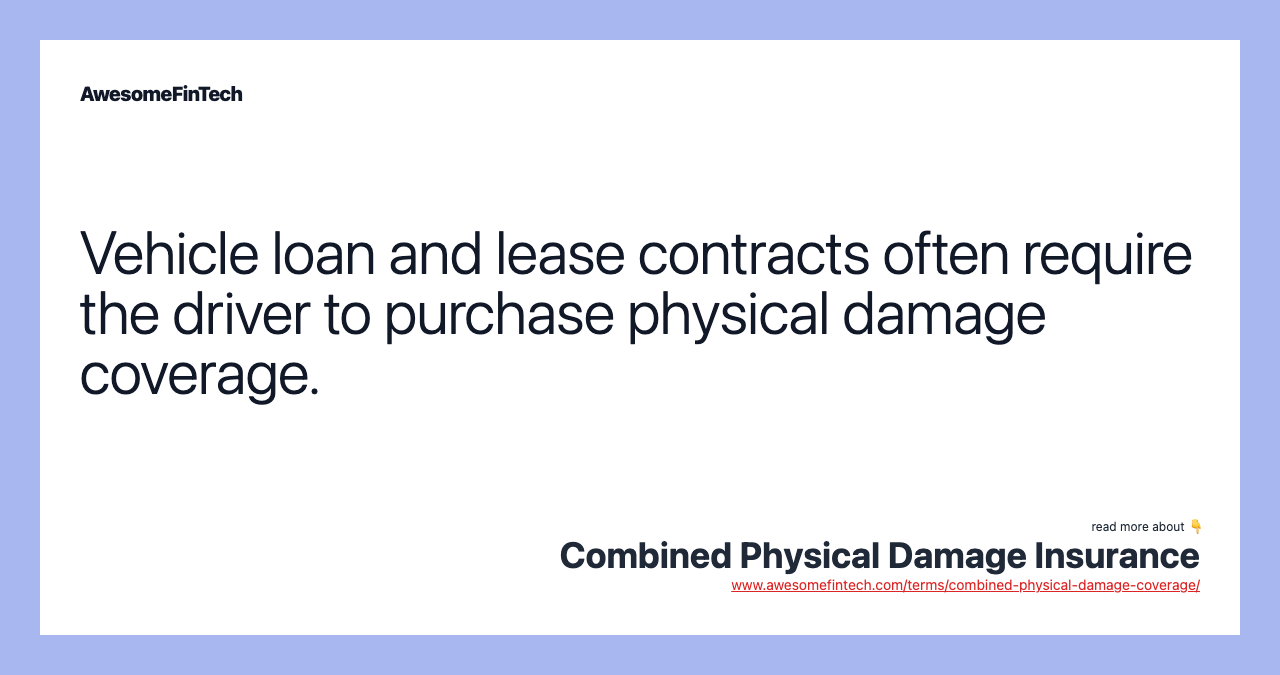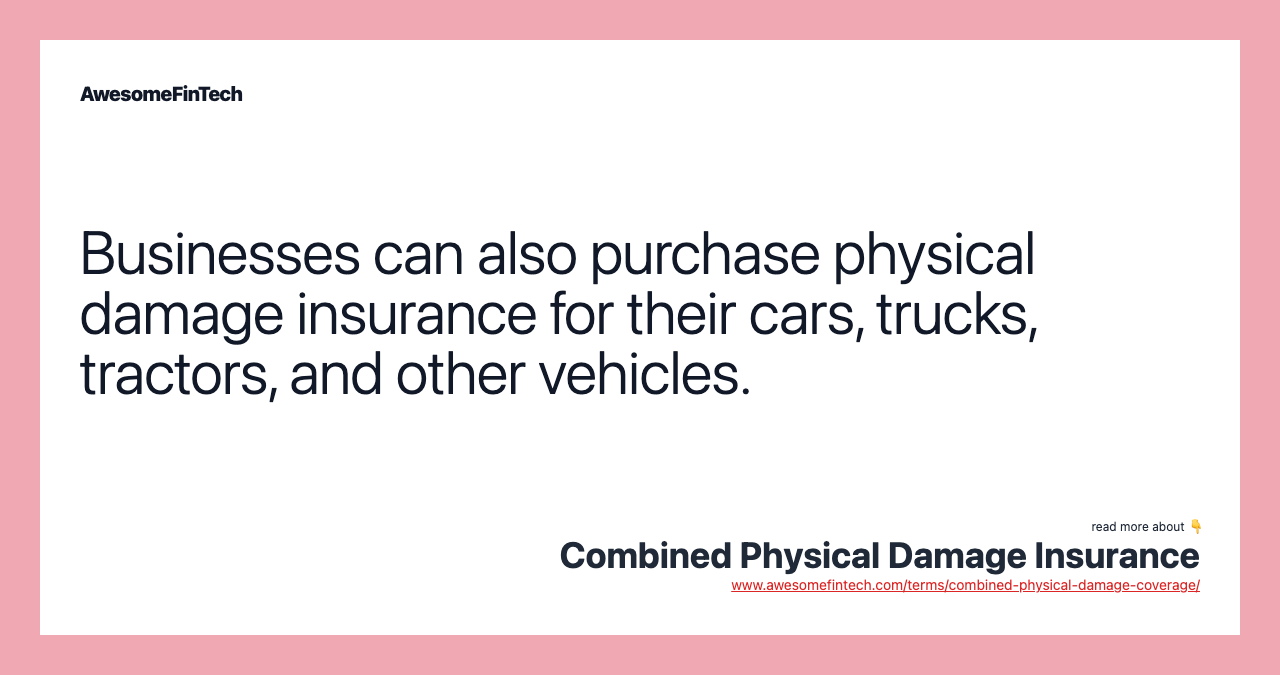Combined Physical Damage Insurance
Combined physical damage insurance is a type of auto insurance policy that reimburses policyholders for damage to their own vehicle resulting from a collision or other causes, essentially combining the coverage in the collision and comprehensive portions of a conventional auto insurance policy. Combined physical damage insurance is a type of auto insurance policy that reimburses policyholders for damage to their own vehicle resulting from a collision or other causes, essentially combining the coverage in the collision and comprehensive portions of a conventional auto insurance policy. Individual states, which set auto insurance laws, require drivers to carry at least a certain minimum amount of bodily injury and property damage liability coverage — and, in some instances, other types of coverage, such as personal injury protection and medical payments coverage. Combined physical damage insurance protects policyholders in the event of vehicle theft, fire, flood, vandalism, window breakage, collisions with animals, and weather-related damage, as well as auto accidents. However, it does not cover costs related to personal injury or damage to other people’s vehicles, as is found in a conventional policy’s bodily injury and property damage liability coverage.

What Is Combined Physical Damage Insurance?
Combined physical damage insurance is a type of auto insurance policy that reimburses policyholders for damage to their own vehicle resulting from a collision or other causes, essentially combining the coverage in the collision and comprehensive portions of a conventional auto insurance policy. However, it does not cover costs related to personal injury or damage to other people’s vehicles, as is found in a conventional policy’s bodily injury and property damage liability coverage.



How Physical Damage Insurance Works
Combined physical damage insurance protects policyholders in the event of vehicle theft, fire, flood, vandalism, window breakage, collisions with animals, and weather-related damage, as well as auto accidents. Premiums for physical damage insurance vary based on the value of the vehicle and its owner’s accident record.
Lenders, lessors, and lienholders often require physical damage insurance for financed and leased cars to protect their interests if the car is stolen or damaged. Noncompliance can result in a termination of the lease or loan agreement.
Individual states, which set auto insurance laws, require drivers to carry at least a certain minimum amount of bodily injury and property damage liability coverage — and, in some instances, other types of coverage, such as personal injury protection and medical payments coverage. However, they do not require collision, comprehensive, or physical damage insurance.
Physical Damage Insurance for Businesses
Businesses that operate vehicles for commercial purposes can also buy physical damage insurance to cover their cars, trucks, tractors, and other vehicles. Additionally, they have the option of buying “specified perils” coverage, which is cheaper than combined physical damage insurance because it covers a more limited set of risks. That type of insurance is often referred to as “fire and theft with combined additional coverage (CAC).”
Rather than a single policy, businesses with multiple vehicles can choose to cover (or not cover) each vehicle separately. “Regardless of how many vehicles your business has, it may be cost effective to carry physical damage coverage only on the newer or more valuable vehicles,” the Insurance Information Institute notes.
In some instances, businesses may find it more economical to self-insure against the physical risks to their vehicles, while also buying commercial insurance to meet their state’s liability requirements.
Related terms:
Auto Insurance
Auto insurance is purchased by vehicle owners to mitigate costs associated with getting into an auto accident. Discover more about it here. read more
Liability Car Insurance
Liability car insurance provides financial protection for drivers who harm someone else or their property while operating a vehicle. read more
Business Automobile Policy (BAP)
A business automobile policy (BAP) covers the vehicles a company uses in the course of carrying out its business. read more
Collision Insurance
Collision insurance is auto coverage that reimburses the insured for damage sustained to their personal automobile, due to the fault of the insured driver. read more
What Is Comprehensive Insurance?
Comprehensive insurance is car insurance that covers damage to your car from causes other than a collision. Learn about comprehensive insurance costs. read more
Insurance Premium
An insurance premium is the amount of money an individual or business pays for an insurance policy. read more
Medical Payments Coverage (MedPay)
Medical payments coverage (MedPay) is an addition to your auto insurance policy for medical expenses resulting from a vehicular accident to all individuals in your car. read more
Personal Injury Protection (PIP)
Personal injury protection is a feature of auto insurance that covers medical expenses related to a car accident. read more
Self-Insure
Self-insure is a method of managing risk by setting aside a pool of money to be used to mitigate unexpected losses. read more
Third-Party Insurance
Third-party insurance, the most common example being auto insurance, is a policy designed to protect against the actions or claims of a third party. read more